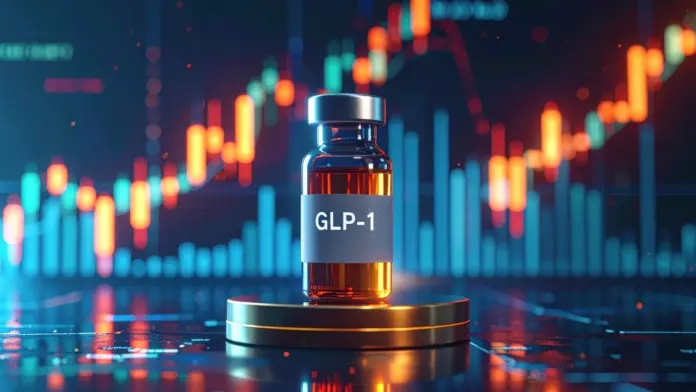How GLP-1 Meds Impact Addiction
Glucagon-Like Peptide-1 Receptor Agonists (GLP-1RAs) have proven highly successful in treating diabetes and obesity. But now they’re being explored as a promising approach to the treatment of alcohol and drug dependency.
Lead researcher, Lorenzo Leggio, M.D., Ph.D., of the National Institute on Drug Abuse (NIDA) and the National Institute of Alcohol Abuse and Alcoholism (NIAAA), remarked that “Early research in both animals and humans suggests that these treatments may help reduce alcohol and other substance use.”
Both NIDA and NIAAA are part of the National Institutes of Health in Bethesda, Maryland. He added, “Some small clinical trials have also shown encouraging results.
Limited Treatment Options for Addiction
SUDs are grouped into four categories and diagnosed based on specific criteria. The categories are: Impaired control, social problems, risky use and physical dependence.
SUDs and their negative effects are a global problem that affects not only individuals but also societal health at large, families, and communities. According to Rehab.com’s Drug Use Statistics report, addiction-related costs, including healthcare expenditures and lost productivity, amounted to $260 per taxpayer in 2023.
The evidence suggests that alcohol is the most harmful drug. The consequences of alcohol include individual health issues, but extend beyond to include issues such as alcohol-related car accidents, domestic violence, and gun violence.
Less than a quarter of individuals received treatment for SUD in 2023 despite the high number of affected individuals and the far-reaching consequences.
There are many barriers to treatment, which keep treatment levels low. The study concludes that these barriers occur at the clinician, individual, and organizational levels and that the continued stigma of addiction plays a part in the underutilization of treatment.
“Current treatments for [alcohol and other substance use disorders] fall short of addressing public health needs,” according to the researchers.
The Potential for Addiction Treatment With GLP-1s
GLP-1s have gained prominence for their effectiveness in treating obesity, offering individuals significant weight reduction.
This class of drugs plays a key role in the inhibitory effects on the gastrointestinal system and the central nervous system, according to the study. GLP-1R acts on the central nervous system to curb appetite. Individuals receiving the drug are better able to eat only when hungry and to stop eating when they’re full.
The study notes that some types of obesity present with biochemical characteristics similar to addiction, including neurocircuitry mechanisms. The researchers acknowledge that these conclusions are controversial.
The study notes, “Pathways implicated in addiction also contribute to pathological overeating and obesity.”
Keeping this in mind, some researchers have looked into GLP-1s as potential medications for SUD treatment. Some clinical investigations have suggested that GLP-1s modulate the neurobiological pathways that underlie addictive behaviors. The drugs may potentially reduce cravings for and the use of substances while also addressing comorbid conditions.
What the Evidence Shows So Far
There are several studies examining the effects of GLP-1s on SUDs. These include:
Tobacco use disorder (TUD): Preclinical data reveal GLP-1 receptor agonists reduce nicotine-related outcomes in mice. These outcomes include a reduction in the reinstatement of nicotine seeking and nicotine self-administration. The initial clinical trials reveal a potential for GLP-1s to reduce not only the number of cigarettes per day, but also the prevention of weight gain that follows smoking cessation for many people.
Opioid use disorder (OUD): Several GLP-1 receptor agonists, when tested in rodent models, have reduced the self-administration of fentanyl, oxycodone, and heroin. Additionally, the medications reduced the reinstatement of drug-seeking behaviors, an indication of drug addiction relapse in rodents.
Alcohol use disorder (AUD): Exenatide, the first GLP-1 agonist approved for diabetes, was shown in a randomized controlled trial to have no real effect on alcohol consumption. However, a secondary analysis did indicate a reduced intake of alcohol in the subgroup of those with AUD and comorbid obesity. A newer GLP-1 receptor agonist approved for obesity and diabetes, semaglutide, showed in a more recent randomized controlled trial at a low dose to reduce alcohol self-administration in the lab. It also reduced cravings and drinks per drinking day in those with AUD.
A Promising Path Forward
Both Leggio and his colleagues advise that larger and more studies are necessary to confirm how well these drug therapies work. More studies will shed light on the mechanisms underlying the GLP-1 therapies in terms of substance use and addictive behaviors.
The researchers are optimistic that these new therapies will help address the significant problems found in SUDs.
Leggio remarked, “This research is very important because alcohol and drug addiction are major causes of illness and death, yet there are still only a few effective treatment options. Finding new and better treatments is critically important to help people live healthier lives.”
Find Trusted Addiction Treatment Today
If you are ready to get help for a drug or alcohol addiction, evidence based care is available now. Explore top rated rehabs, compare programs, and verify insurance coverage using Rehab.com’s national directory.
Or call
800-985-8516
( Sponsored Helpline )
for immediate support.





